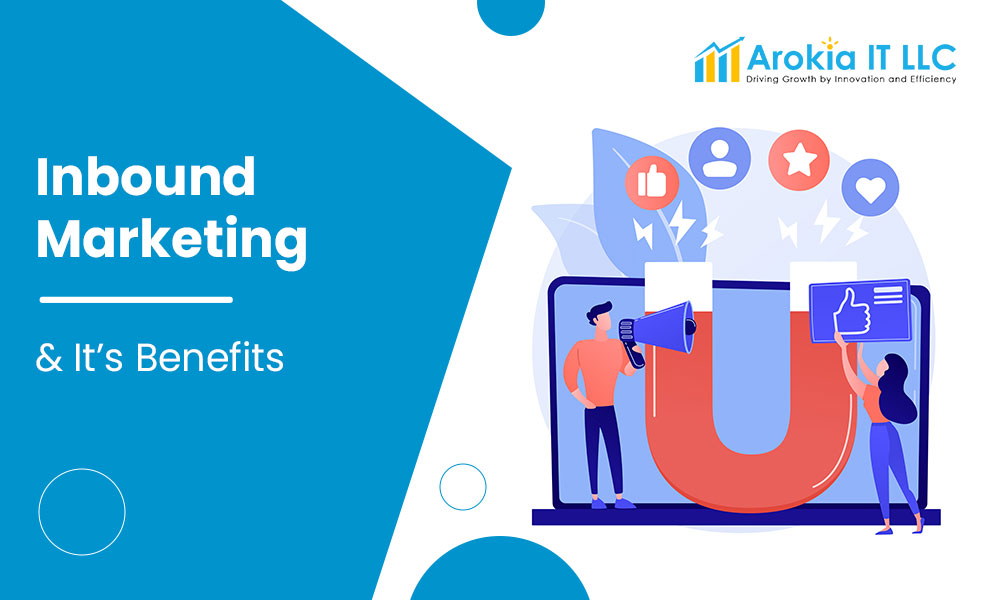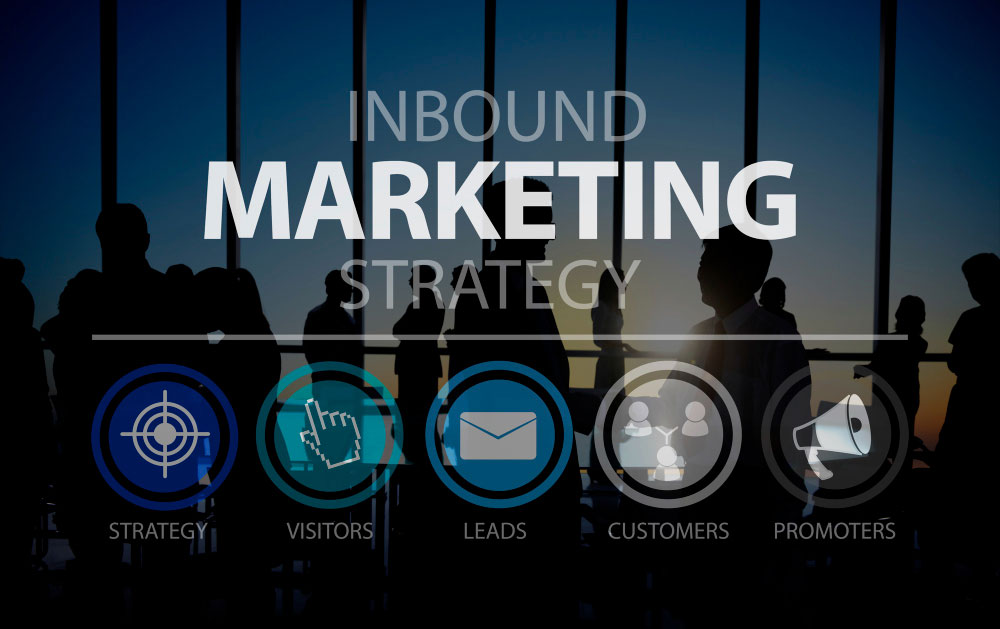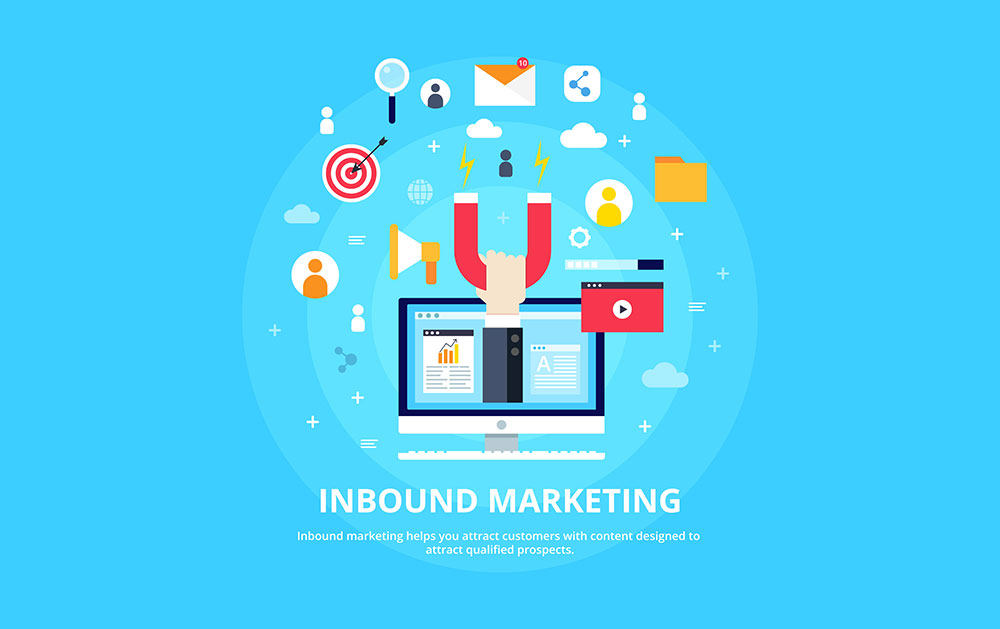What is Inbound Marketing? & Its Benefits
What is Inbound Marketing?
Inbound marketing is a marketing strategy that focuses on ‘pulling’ high-quality leads to your business. At its core, inbound marketing is about creating value for your target audience by understanding their challenges and creating resources that help them overcome their obstacles.

Inbound marketing is largely centered around quality content, how you market that content, and how it helps you rank in search engines.
The Inbound Marketing Philosophy-Pulling the target audience to you: The inbound philosophy replaces “interruption” marketing and outbound methods by focusing on pulling the target audience to you, rather than pushing your content – forcefully – to them.
The Inbound Marketing Philosophy-Pulling the target audience to you: The inbound philosophy replaces “interruption” marketing and outbound methods by focusing on pulling the target audience to you, rather than pushing your content – forcefully – to them.

Why Is The Inbound Marketing Strategy so Valuable?
- It gives a clear picture of your audience,
- How you will reach them, and
- The kind of content to provide along each stage of the buyer’s journey.
- The time you invest in creating an inbound marketing strategy is well spent, and will certainly make your marketing life easier.
Developing an inbound marketing strategy: Plan
Devise a proper plan: Determine what your ultimate goal is,
- Whether it’s selling a particular product,
- Signing up new customers for a service, or
- Any other desired outcome.
- Once you know what you want your inbound marketing campaign to accomplish, decide what you are going to offer the potential customer on the way to that goal.
Analyze
Analyze the impact of the marketing materials used. It is important to check relevant figures related to materials at regular intervals, such as
- How many views a blog post receives,
- How many readers clicked through to the sales page,
- Whether or not sales have increased since the start of the campaign.
- It helps to set incremental goals and benchmarks in your planning phase to give these figures comparative value.
Revise
You should revise your strategy once you have implemented your marketing plan and have collected data to determine its effectiveness.
- You can compile what you have learned and synthesize the lesson into a stronger campaign instead of starting from scratch every time.
- Keeping good records and making thorough reports are vital for this learning process.
The Inbound Marketing Strategy
Start with a solid foundation: your website – Is it an Inbound-ready Website?
A proper website needs to:
- Be visually appealing to the eye (think user experience or UX),
- Have small page sizes for fast load times,
- Incorporate proper conversion paths,
- Include highly visible and engaging calls to action (CTAs),
- Have a resources center for all of your blogs, e-books, webinars, and so forth,
- Utilize forms throughout, making it easy for your website visitor to ask for more information.

Plan your content to fill all levels of the sales funnel
Create Targeted meaningful content
- Focus more on the human you’re trying to speak to and their pain points, rather than stuffing keywords in 15 places throughout your blog article.
- Talk to a human, not a robot.
- Creating targeted content with intent and purpose is the quiver in your inbound marketing arrow.
- It guides content, leading it straight to the right user, and provides them with a solution.
Creating Buyer Personas & Target Market
Find detailed information about how to gather the data you need and create personas to guide your inbound marketing strategies. Among the characteristics you should identify for each buyer persona are:
- Career background,
- Demographics,
- Communication preferences,
- Industry and company size,
- Job title or role,
- Goals, and challenges.
Instead of trying to tie all of your products into one marketing strategy, leverage your new personas, and create strategic marketing campaigns focused on one product at a time.
Analytics
- Analytics helps to measure your growth and reveals where you can improve efforts and emphasize optimization.
- Google Analytics is the most popular source for accurate reporting.
- Some CRMs, like HubSpot, allow you to include tracking codes on buttons and links so you can measure your entire marketing funnel from acquisition to close.
Email marketing
- Email marketing allows you to leverage a different platform, other than just your website, to get your message across.
- Your social media should serve a purpose:
To showcase you as a thought leader in the industry by sharing evergreen content on industry news, as well as pushing out thought leadership content your organization creates. This drives people to your website, to a landing page, to fill out a form, and … you get it.
Video can and should be incorporated
Tying video — whether it’s a one-minute explainer video about who you are and what stands you apart or a live webinar with industry experts — video can and should be incorporated into your inbound and demand gen strategies. Remember that video content is king.
Paid advertising
Incorporating paid into your inbound marketing strategy gives an extra boost, targeted to the exact persona you’re aiming for.
Rate Your Inbound Marketing Program Scorecard
- Take a closer look at your entire inbound marketing program to see if there are holes in the hull just waiting to take you down, and start patching them right away with these additional resources using Inbound Marketing Program Scorecard.
- Utilize your customer relationship management (CRM) system.
HubSpot at SmartBug: HubSpot’s CRM allows us to seamlessly perform all of the marketing strategies discussed above, connect these elements to campaigns and reporting, track lifecycle stages, create tasks for sales, and so much more.
What are the benefits of Inbound Marketing?

Here are some key benefits of inbound marketing:
- Reduced expense,
- Higher trust and credibility,
- Quality traffic and leads,
- Opportunity to learn and evolve,
- Attract visitors,
- Convert visitors into leads,
- Nurture leads into customers,
- Delight customers,
- Content is evergreen,
- Builds brand awareness and brand authority,
- Simplifies the job of sales, marketing, and customer service,
- Adds value to prospects in the digital world we all live in.
The Inbound Marketing Methodology
Inbound Marketing, where you work to attract customers to your brand by providing engaging, informative, and highly relevant content on your blog, social media, and elsewhere on the web. The inbound methodology combines multiple media types across multiple channels to convey your brand message, raise awareness, and provide solutions to pain points that your customers are known to have. All that while building trust in your brand as a source of great information. The 4 stages of the inbound marketing methodology are Attract, Convert, Close, and Delight.
Attract Tools
How would you get them there? You pull in a greater amount of the correct clients with significant content at the perfect time — when they’re searching for it.
- Ads
- Blogging
- Video
- Social Publishing
- SEO
- Pages
Engage Tools
Utilize discussions to make enduring associations with prospects on the channels they lean towards through, email, bots, live visits, or informing applications. Utilize the change apparatuses — CTAs, structures, and lead streams, to catch the data of prospects visiting your site.
- Email newsletters,
- Marketing automation,
- Chatbots,
- Lead generation,
- Blogging,
- Social Media Marketing
Close Tools
The next step in the inbound marketing methodology is “closing” your leads and turning them into happy customers. Because this goal is consumer-focused, the process is typically a joint sales and marketing effort. Your leads should become “sales-qualified” and ready to buy by the end of this step.
- Emails
- CRM Marketing
- Automation
Delight Tools
There are a few techniques that will help guide your leads into becoming customers:
- Lead Scoring,
- Email, Marketing,
- Automation,
- Closed-Loop Reporting
Following the above steps will make your consumers become promoters of your brand! At each stage, there are specific methods by which this conversion is achieved. It is important that your marketing actions are timely and targeted, and this is what the methodology aims to help you accomplish Inbound Marketing Tactics. The right tools allow you the best means of targeting your reach and improving your content strategy implementation.
Your Analytics Tools
Moz – They now provide amazing optimization insights to businesses intent on broadening their “search-optimization” horizon. Google Analytics – Google Analytics lets you track various website metrics, such as,
- Duration of visits,
- Bounce rate,
- The number of visits and pages per visit.
- These categories may be tracked by geography, platform, and more.
Your Social Tools
HootSuite – Hootsuite allows you to neatly arrange all of your social media channels under one easy-to-manage hub. From here you can compile, compose and schedule your posts with its handy automation features. Spending a little extra gets you reporting efficiently, with Hootsuite’s analytics tools.
BuzzSumo – BuzzSumo may be leveraged to gain insights into the content and context of your social media messaging. When used as a tool to measure the most shared content and key influencers, BuzzSumo is handy in helping you create targeted messaging that works, as well as giving you enough data to build your content around.
Your Email and Newsletter Tools
MailChimp – MailChimp is a great way to reach out to prospects and implement your delight phase with regular, informative emails. Best of all the handy program reports back with analytics that measures bounce rates, clicks, and more.
Optimizely – A great all-around tool for checking everything from forms, and CTA’s to analytics. The strength of Optimizely lies in its A/B testing ability (also known as split testing or bucket testing) allowing you to measure, iterate and improve. Run multivariate testing on your websites, landing pages, and mailers to help your chances of improved conversion rates.
WordPress – A free content management system, WordPress powers over 44% of the world’s websites. The straightforward layout and functionality allow you to modify themes and plugins to suit your website needs. A great tool for small to medium-sized businesses, most WordPress plugins are free and most themes are designed to be mobile-friendly.
HubSpot – The HubSpot CRM and CMS have been cemented as the go-to platforms for your marketing, sales, service, and website needs. Integrated and used as a central platform, you can create exceptional experiences for your visitors, prospects, and customers. They’ve recently launched their CMS Hub, making website management easy to do for your marketers, and giving your developers a powerful platform to create web apps or tools.
With successful inbound marketing campaigns being more of a strategic and well-planned methodology, your inbound toolkit is highly specified to target your buyer persona and keep them engaged. Use these tactics to highlight and target your ideal personas and lead them through each of the Flywheel stages
The problems with inbound marketing
You can never be 100% sure which pieces of content are going to do well. No matter how much time and effort you put into creating a piece of content, there’s no guarantee it will perform well. It takes time to reap the rewards: The first 3-6 months are hard grafts for a marketer. Lots of research, strategic thinking, planning, and testing are involved in coming up with an inbound strategy that works. It takes time and effort. However, if you commit, the results are proven and undisputed.
HubSpot outlines six of the most deadly mistakes that doom inbound marketing campaigns
- Buyer personas that aren’t backed by data.
- Marketing and sales departments that aren’t aligned.
- Content that has no direction.
- Failure to congregate content into hubs around key umbrella topics.
- Promotion of content that misses the right channels.
- Workflows that don’t sync to your customers’ buying cycles.
Inbound marketing is the future

- Its very philosophy is based on doing business in a more personal way, suited to the digital world we live in today.
- However, regardless of the power of inbound marketing, applying outbound techniques will surely boost performance in the short term.
- Committing to the inbound methodology for at least 12 months should increase your; web traffic, conversion rates, revenue from online sources, search rankings, brand authority, customer insights, and overall sales and marketing efficiency.
Measure and Evolve For Long-Term Success
- All of the effort you put into your inbound marketing strategy will be wasted unless you are measuring results and tweaking methods based on those results.
- Collecting data on your campaigns’ KPIs shows how leads are flowing into the sales team and provides insight into what’s working and what’s not. Knowing that you can adjust so that your inbound marketing efforts start to become more effective.
A comprehensive inbound marketing strategy is so valuable
- In Inbound marketing, you’re there holding the visitor’s hand without being annoying or intrusive as they work to find the solutions and answers they need.
- Inbound marketing, you know that it’s a slow and steady race that includes incremental work that will build up over time.
The key to success in inbound marketing is transparency, honesty, and engagement. You must be transparent and honest about your products and services. And you have to engage with people who are talking about your brand even when the comments are negative. Direct connections with consumers not only create brand loyalty but they let you know what problems exist so you can solve them. In addition, your customers are empowered to become ambassadors for your business. They can write reviews, promote your content on social media, and make referrals.
Social Media Helping you open windows of opportunity worldwide
- Maintaining a presence on social media has become inevitable for businesses around the world – that’s how they reach and engage with their customers.
- When used correctly, YouTube, Facebook, Instagram can be powerful social media marketing tools.
The key to your social media marketing plan is to
- Always keep the buzz alive,
- Keep generating new content,
- Keep your audience interested.
Radhika Rajalakshmi
Author
